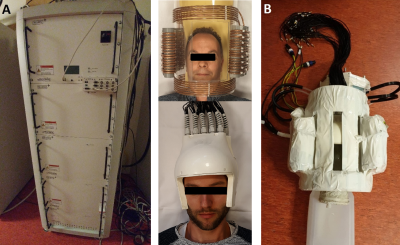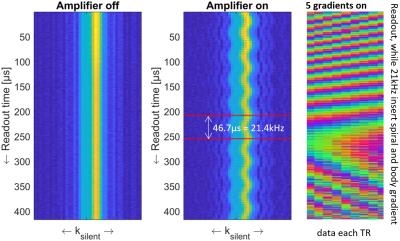Dimitri Welting1, Edwin Versteeg1, Ingmar Voogt2, Joost van Straalen3, Martijn Heintges3, Marco Rietveld3, Jeroen C.W. Siero1,4, and Dennis W.J. Klomp1
1Radiology, University Medical Center Utrecht, Utrecht, Netherlands, 2Wavetronica, Utrecht, Netherlands, 3Prodive Technologies, Son, Netherlands, 4Spinoza Centre for Neuroimaging Amsterdam, Amsterdam, Netherlands
1Radiology, University Medical Center Utrecht, Utrecht, Netherlands, 2Wavetronica, Utrecht, Netherlands, 3Prodive Technologies, Son, Netherlands, 4Spinoza Centre for Neuroimaging Amsterdam, Amsterdam, Netherlands
A light weight setup is
constructed to boost the spatiotemporal resolution for fMRI experiments. Using
a modified gradient amplifier and 2-axis insert gradient coil in combination
with a 72 channel setup successful MR signals were recorded.

Figure 1: The components of the setup used. The NG500 1.1
gradient amplifier (A). (B) consists of the 2-axis insert gradient, an 8
channel transceive dipole array, a 64 channel receive array and an agar-based head
phantom. The middle images show a more detailed view without insulation tape of
the used insert gradient and receiver coils.
